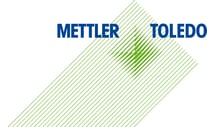
Weighing in Compliance with European Pharmacopoeia Chapter 2.1.7

%20HR.jpg)
The European Pharmacopoeia (Ph. Eur.) is the single reference work for the quality control of drugs in 39 European countries. The new Ph. Eur. General Chapter 2.1.7 "Balances for Analytical Purposes" was published in July 2021. Compliance with this chapter by 1 January 2022 is mandatory for any pharmaceutical company who manufactures in, or exports into, the European market. As such, it has a similar legal status to the USP Compendium in the United States, and is enforceable by regulatory bodies as part of compliance with Good Manufacturing Practice. A new white paper "Weighing According to Ph. Eur." describes the requirements and implications of Chapter 2.1.7 and explains how to ensure compliance.
This white paper explains:
Make sure that your weighing processes are fully compliant with the new requirements by 1 January 2022 by downloading the White Paper now.
About the author:
Dr. Klaus Fritsch, Manager Compliance, Laboratory Weighing, Mettler-Toledo GmbH.
Dr. Fritsch is a senior metrologist and consultant to the pharmaceutical industry to achieve compliance with applicable regulations when using weighing instruments. He is USP Expert Advisor for the General Chapters 41 and 1251, member of the Ph. Eur. Expert Group for General Chapter 2.1.7, the EURAMET technical committee responsible for the calibration guideline cg-18 on Non-automatic Weighing Instruments, and a working group of the ASTM International Committee E41 that targets balance calibration and testing. His aim is to ensure that the metrological concepts and requirements stipulated by the various standards are sound but still easy to adapt by the industry.